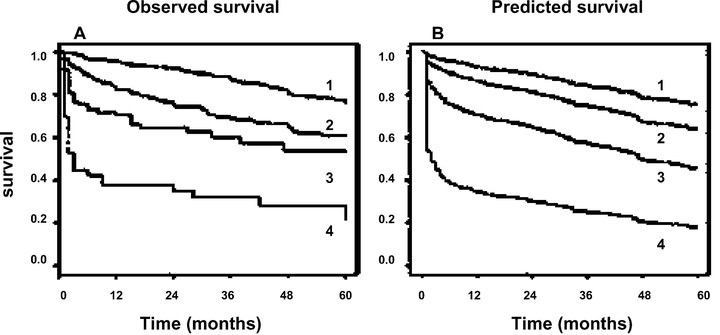Model for end stage liver disease score predicts mortality across a broad spectrum of liver disease

Abstract
BACKGROUND/AIMS: The utility of the model for end stage liver disease (MELD) score in non-transplant patients, particularly in those with less severe chronic liver disease remains uncertain. We studied and compared the predictive abilities of the MELD score and the Child-Turcotte-Pugh (CTP) score for intermediate (1-year) and long-term (5-year) mortality. METHODS: One thousand six hundred and eleven patients with chronic liver disease were studied. Observed and predicted survival curves were plotted to evaluate the predictive ability of the MELD score for survival. Receiver operating characteristic (ROC) curves was used to compare the MELD and CTP score. A multivariable model was constructed to examine predictors of mortality. RESULTS: The MELD score was a good predictor of 1-year mortality in chronic liver disease (c-statistics for all subgroups >/=0.75) and of 3- and 6-month mortality in alcoholic hepatitis (c-statistic >/=0.83). The CTP score had similar predictive abilities as the MELD. Hepatic encephalopathy was a strong independent predictor of death (Hazard ratio-2.8, P<0.0001). CONCLUSIONS: The MELD score is a valid prognostic score for intermediate term mortality in a heterogeneous population with chronic liver disease although the CTP score is equivalent in predicting survival. Inclusion of hepatic encephalopathy adds additional prognostic value to the MELD score.